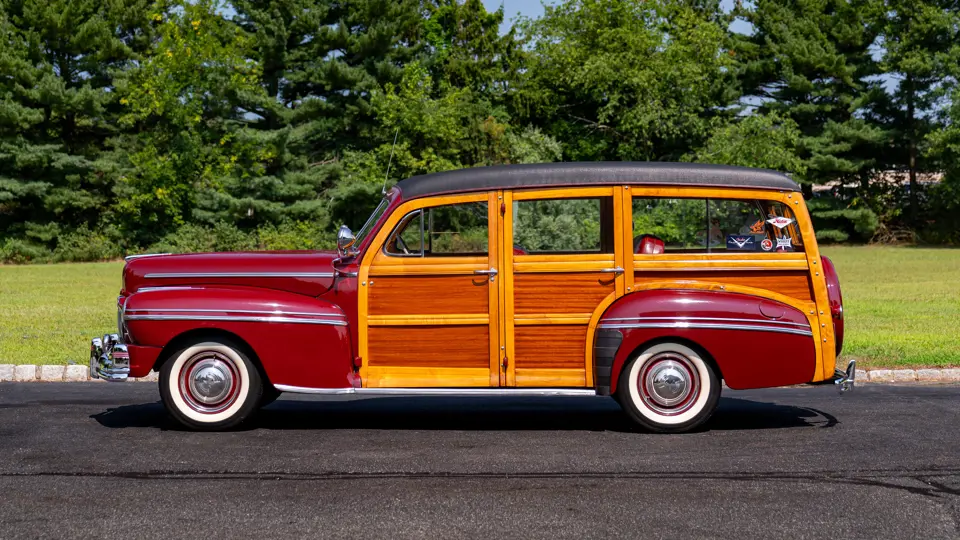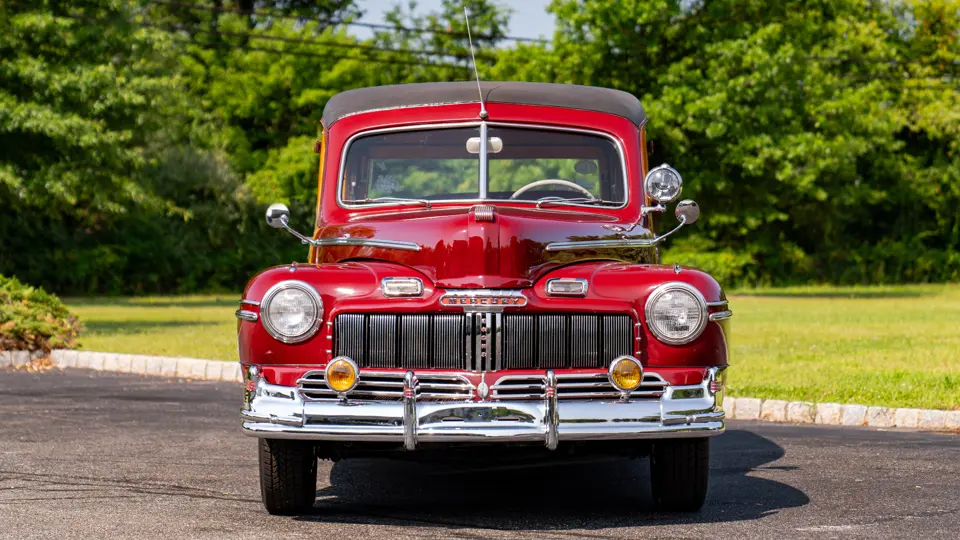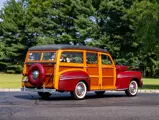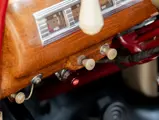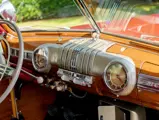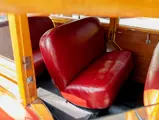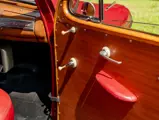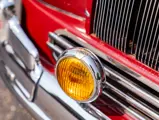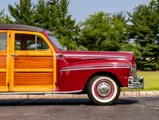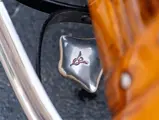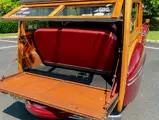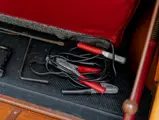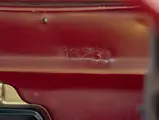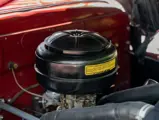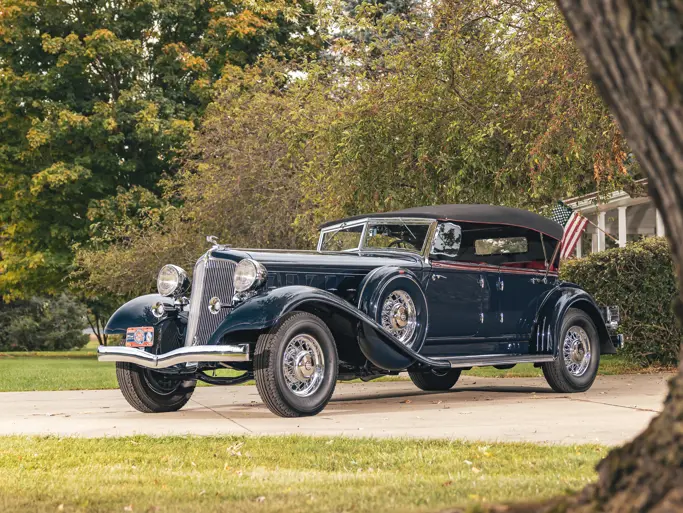
1946 Mercury Station Wagon
{{lr.item.text}}
$36,300 USD | Sold
The Sportsman Collection
{{bidding.lot.reserveStatusFormatted}}
- One of just 2,797 Mercury wagons built for 1946
- Much rarer than its Ford Motor Company counterparts
- 100-hp flathead V-8 engine mated to a three-speed manual transmission
- Equipped with optional driver-side spotlight, radio, and heater
Introduced in 1939, Mercury, named after the Roman god, was the culmination of Edsel Ford’s idea to market a car that would compete with medium-priced offerings like those offered by Buick, Dodge, Nash, Oldsmobile, and Pontiac. Using existing Ford components, Edsel set about creating the new car. Styling was a combination of the Ford Deluxe and the Lincoln Zephyr, while its wheelbase was longer than the Ford but shorter than the Lincoln.
Its level of luxury and price strode the middle ground, too. Mercury shared bodies with its Ford sibling, albeit with a unique grille and trim to differentiate it from its less-expensive counterpart. The car was an immediate success with over 70,000 units sold in the first year. Part of the credit goes to Ford’s ubiquitous flathead V-8, whose performance was quite good.
Ford produced its first car following World War II, a Super Deluxe Tudor Sedan, on 3 July 1945. Production, however, was slow to ramp up. Ford also separated Lincoln-Mercury operations from those of Ford car and truck production immediately prior to the introduction of new models on 22 October 1945.
For 1946, Ford used either birch or mahogany, rather than gumwood, in making Mercury Station Wagon body panels. Otherwise, the wagon was a twin to its prewar counterpart. Three interior colors were offered: Golden Tan, red, or gray leather. Just 2,797 were built, making them quite rare when compared to sister wagons from Ford. Mechanically, there were many updates and refinements to the 1946 models, including an extensive redesign of the flathead V-8.
This Mercury Station Wagon was featured in the “woodie” exhibition at the San Diego Auto Museum in the 1990s. It is powered by a 100-horsepower 239-cubic-inch flathead V-8 mated to a three-speed manual transmission and equipped with a driver-side spotlight, AM radio, clock, turn signals, heater, Ford fog lights, and the standard rear-mounted spare tire with metal cover. In addition, it has dual sun visors, sliding rear windows, a lug wrench and jack with handle, and an oil can with spout. Wide whitewall tires complement the exterior finished in Monsoon Maroon with dark red interior.








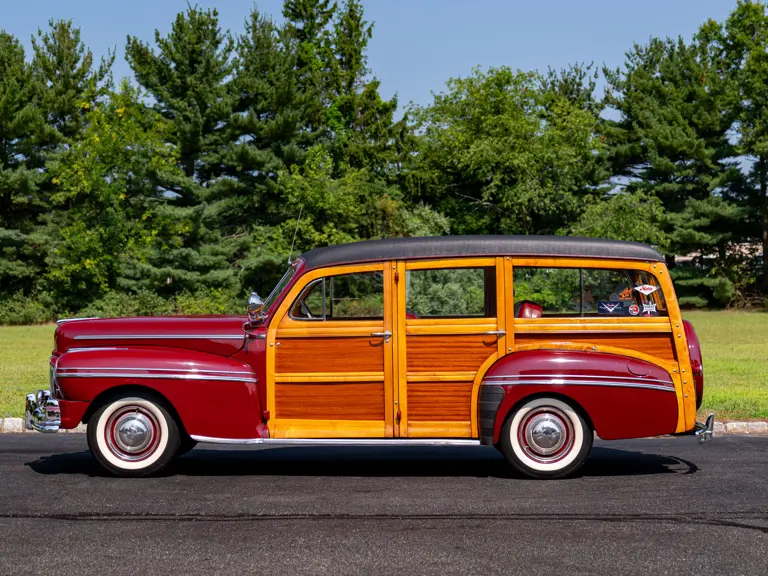










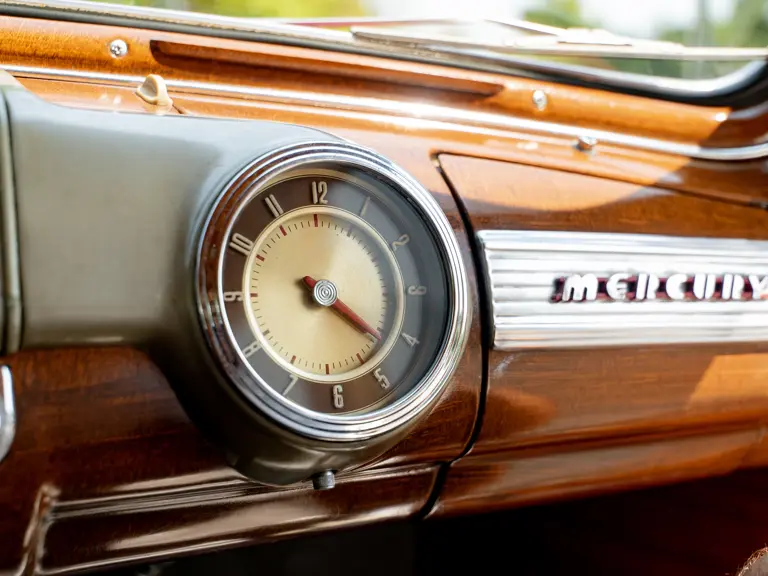



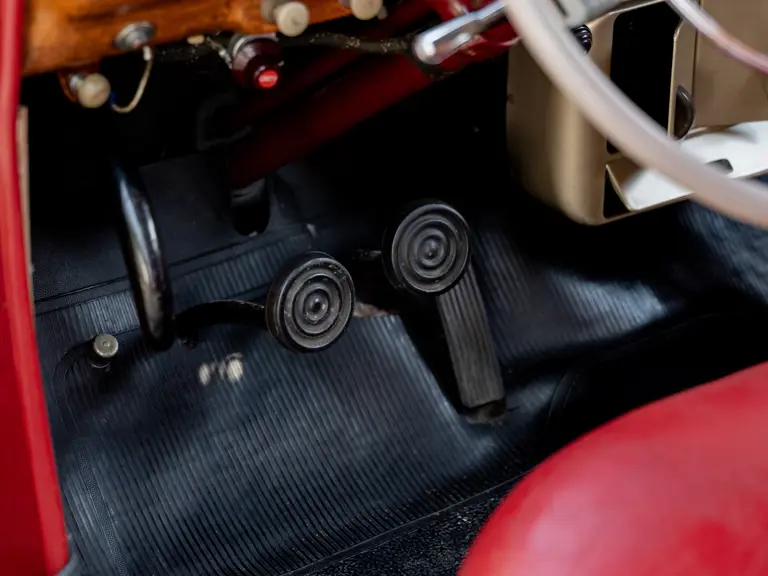
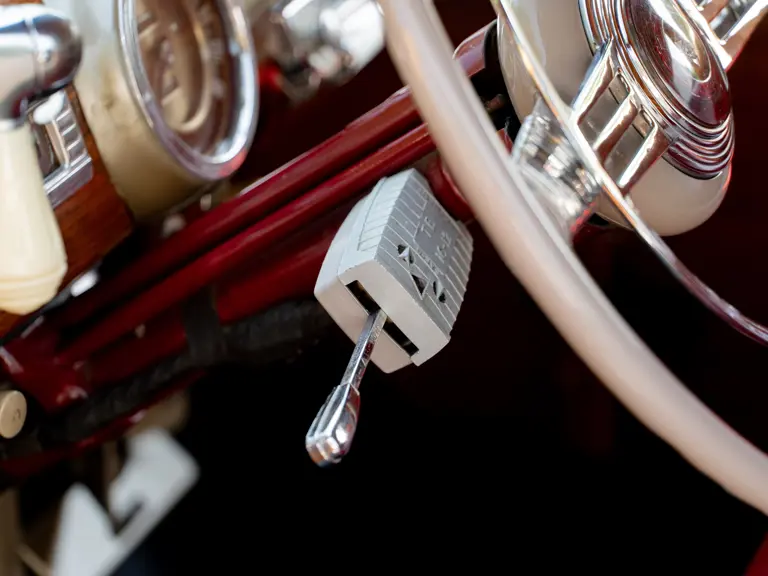












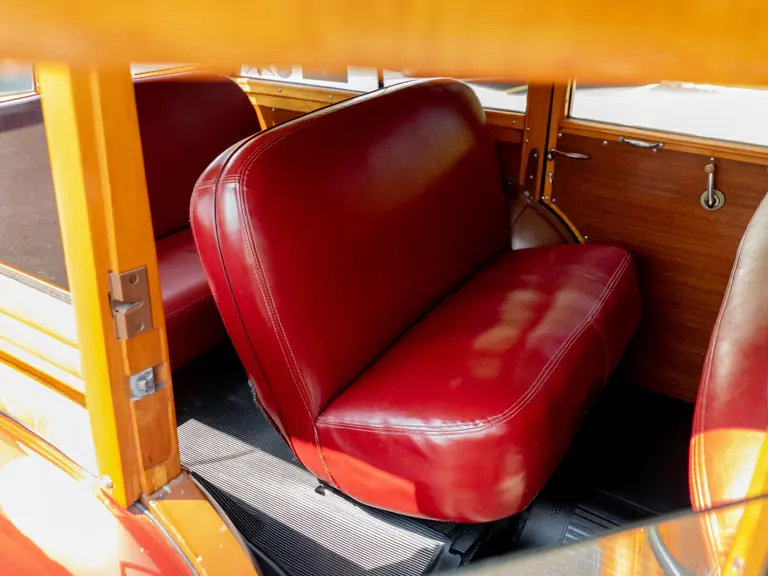





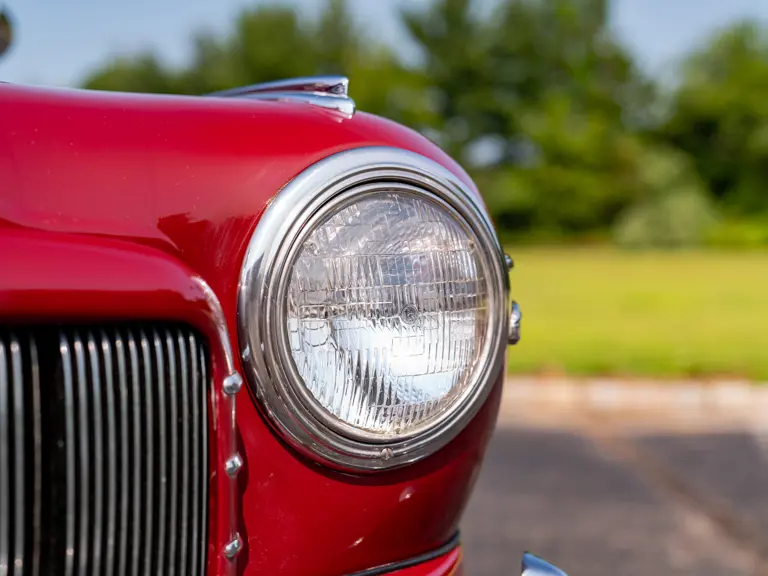


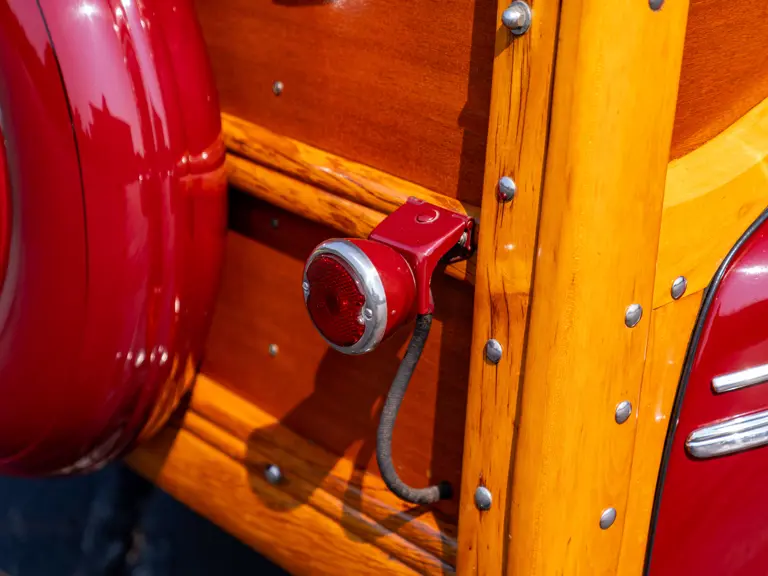





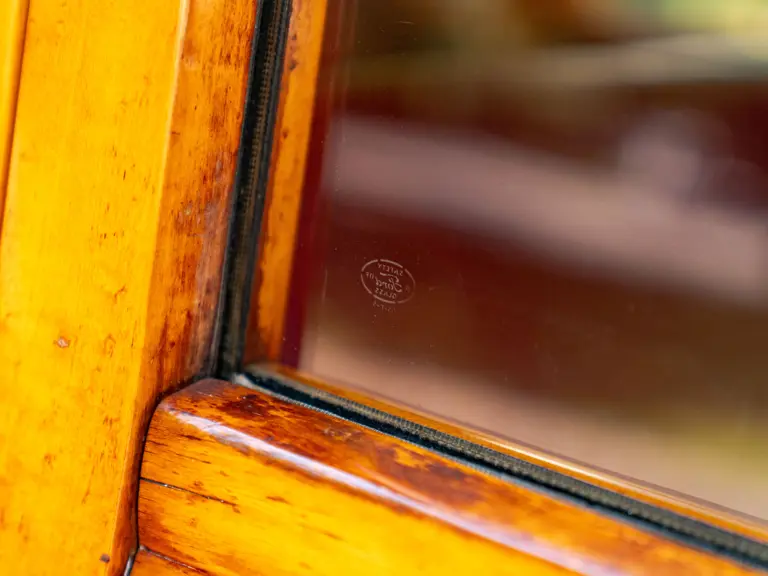
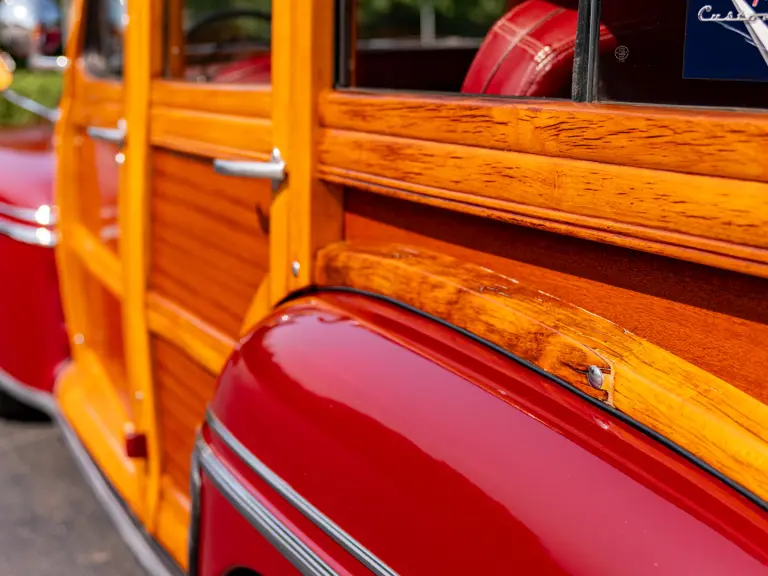

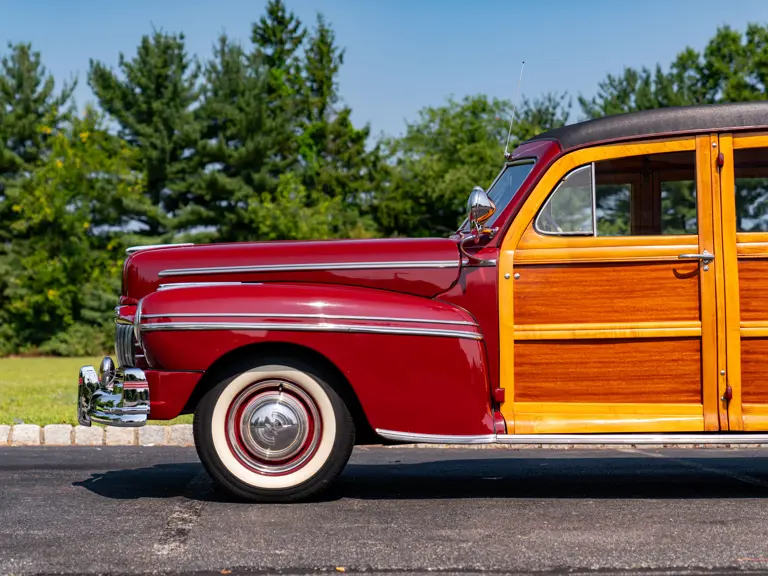







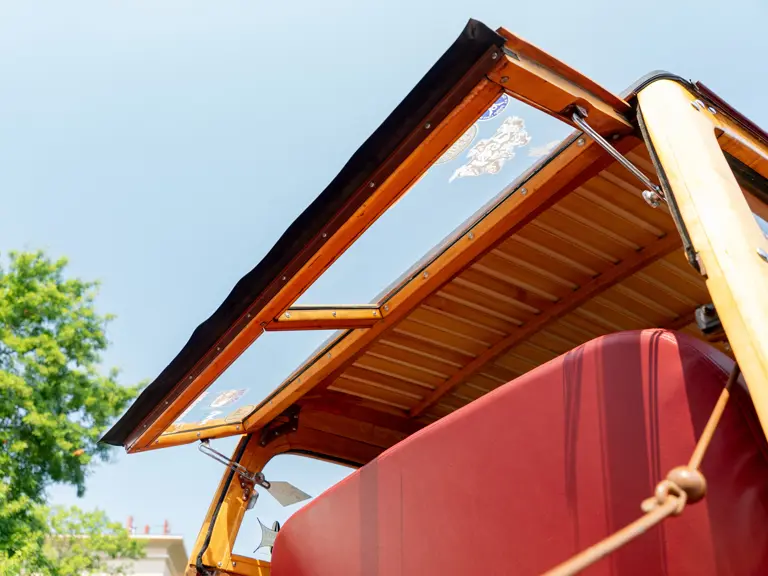




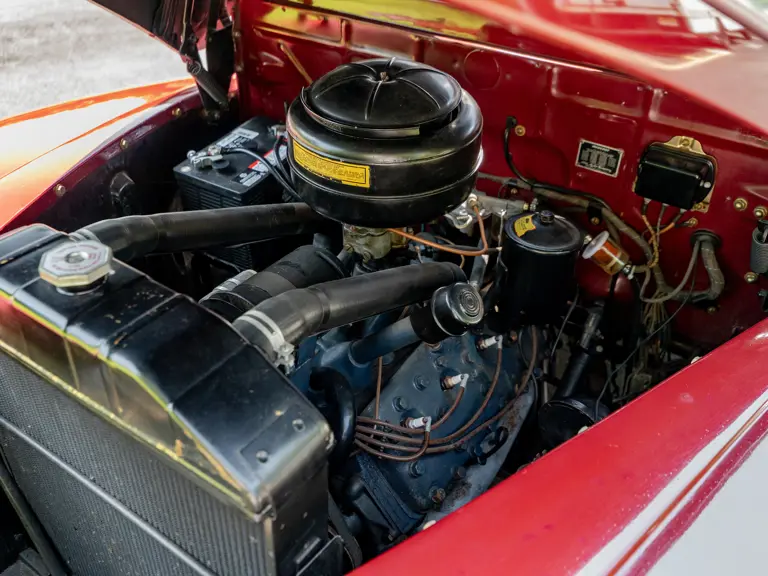




 | Hershey, Pennsylvania
| Hershey, Pennsylvania
